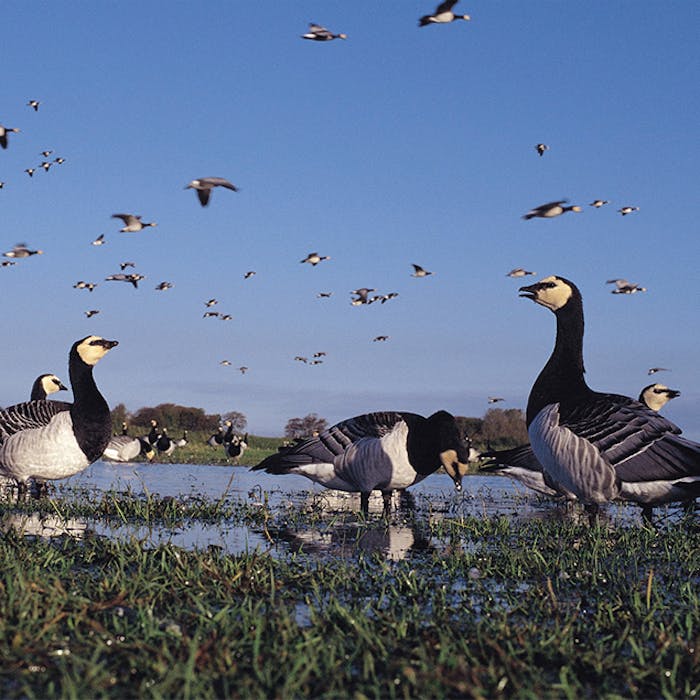
Winter bird visitors head for the wetlands
As autumn is arriving, it can feel like the natural world is pausing in preparation for winter. The fair-weather birds that have come to Britain for the summer have all set off south, leaving the native species relatively silent as they hunker down. But there are newcomers on the way - particularly geese, ducks and similar species heading for suitable lakes, reservoirs and estuaries.
Soon our wetlands will be alive again with wintering water birds arriving: sporadic skeins of geese, swan family groups, droves of ducks and wading birds. Lively, noisy and often spectacular, these winter migratory birds are a welcome sight as the nights draw in, bringing new life to the landscape.
Barnacle geese are amongst them (pictured), descending from their breeding grounds in a variety of northerly locations. Greenland birds fly to Iceland first before migrating onto Ireland and the western Isles of Scotland. Spitsbergen (part of the Svalbard archipelago) birds migrate via the Norwegian coast to winter on the Solway Firth, at places like WWT Caerlaverock bid sanctuary. They can fly at around 65 km/h. People used to believe that these geese hatched from similarly coloured goose barnacles, hence the name, as no one on their wintering grounds ever saw them nesting! That is until people began fitting these geese with electronic tags, so nowadays we fortunately know better, but the geese still have a bit of a mysterious air to them.
Other notable winter arrivals include fieldfares, short-eared owls, redwing, and waxwings.
Further reading
Links to external websites are not maintained by Bite Sized Britain. They are provided to give users access to additional information. Bite Sized Britain is not responsible for the content of these external websites.
